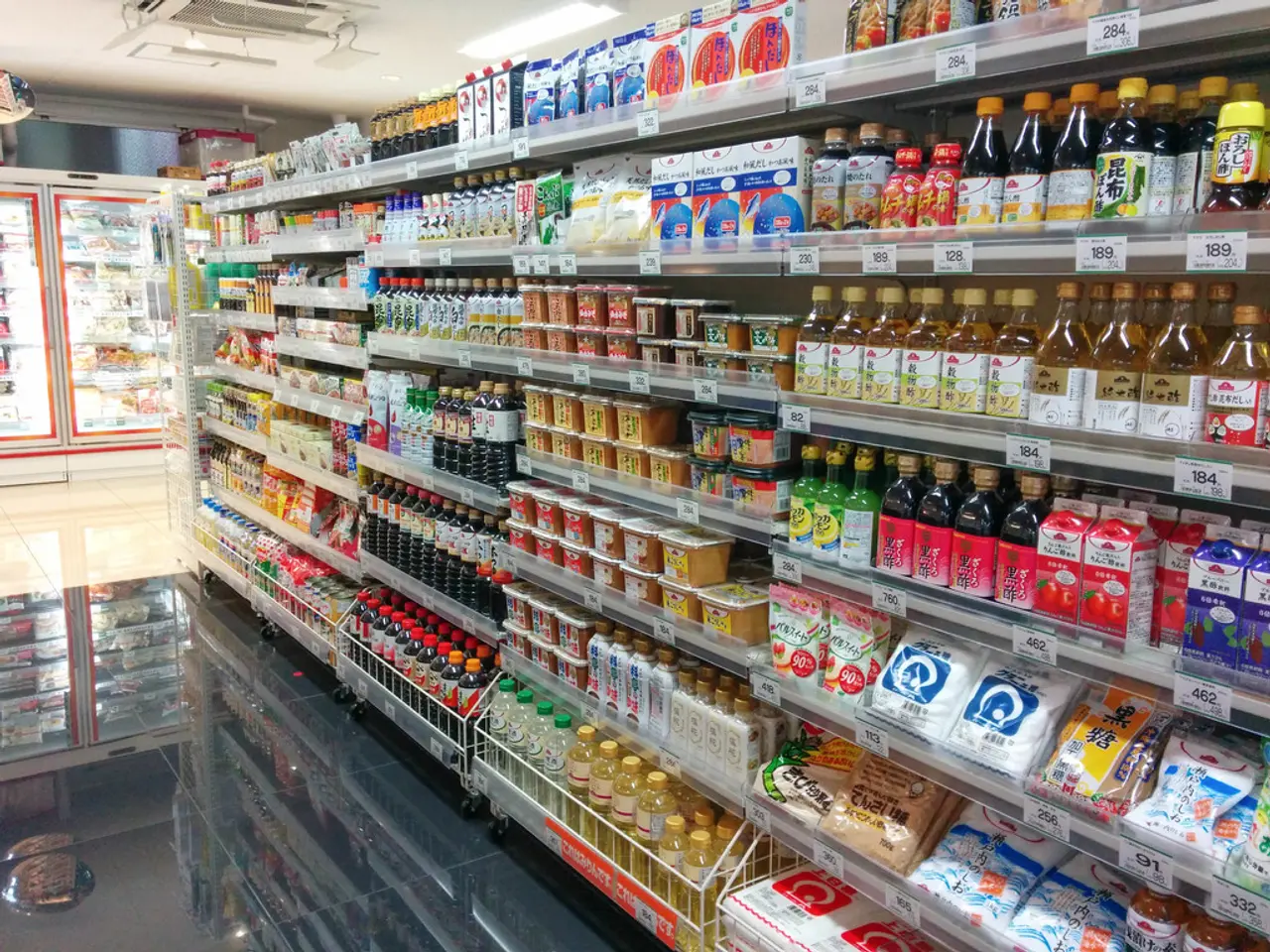Key Insights from Amazon Prime Day 2025 in the E-commerce Sector
Amazon's annual shopping event, Prime Day 2025, set new records for eCommerce sales and growth, marking the largest single ecommerce sales day of the year so far. The four-day event generated $24.1 billion in U.S. ecommerce sales, a 30.3% increase compared to 2024, and $7.9 billion in sales in just the first 24 hours.
One of the key factors contributing to this success was the extended event duration. The four-day format led to greater total sales but lower average daily sales compared to the previous two-day format. This longer event also benefited Amazon's advertising revenue due to more extended promotional time.
Shoppers prioritized lower-priced everyday essentials over big-ticket items, reflected in a lower average order size of $53.34. Nearly two-thirds of households participated in Prime Day deals, indicating broad participation but more focused spending.
The surge in sales extended beyond Amazon's platform, with major retailers like Walmart and Target holding concurrent promotions aligned with Prime Day, demonstrating the event’s role as a market-wide sales catalyst.
AI Tools and Consumer Behavior
AI tools had a significant influence on shopping activity during Prime Day 2025. Traffic from generative AI tools like ChatGPT increased by 3,300%. ECommerce organizations are focusing on differentiation to stand out in a competitive market, with AI tools being an increasingly important component of differentiation. Amazon leveraged their AI-powered tools to boost engagement and sales during Prime Day 2025.
Buy Now, Pay Later (BNPL) and Economic Uncertainty
Economic uncertainty has increased cautious purchases, and consumers have turned to buy now, pay later (BNPL) to preserve spending. BNPL was up 13.6% year-over-year and accounted for $2 billion in Prime Day spending this year.
Sales Breakdown and Product Categories
$7 billion in sales were from mobile devices, accounting for nearly half of all orders. While detailed 2025 category data is limited, previous trends show apparel, shoes, and home goods remain among the top purchase categories during Prime Day.
Looking Ahead
Amazon plans to launch a marketplace for AI agents through Amazon Web Services (AWS). This move is expected to further enhance the role of AI in the eCommerce landscape.
Prime Day 2025 not only set new sales records but also reflected evolving shopper preferences for value and essentials amid economic pressures, leveraged a longer event format to maximize total sales and advertising opportunities, and maintained Prime Day’s role as a key driver in the broader U.S. ecommerce landscape.
[1] Internet Retailer. (2025). Prime Day 2025 Sets New Sales Records. [online] Available at: https://www.internetretailer.com/2025/07/14/prime-day-2025-sets-new-sales-records
[2] AdAge. (2025). Prime Day 2025: Sales, Traffic and Advertising Insights. [online] Available at: https://adage.com/article/digital/prime-day-2025-sales-traffic-advertising-insights/2345878
[3] MarketWatch. (2025). Social Listening Data Reveals Consumer Deal Fatigue During Prime Day 2025. [online] Available at: https://www.marketwatch.com/story/social-listening-data-reveals-consumer-deal-fatigue-during-prime-day-2025-2025-07-16
[4] CNBC. (2025). Prime Day 2025: Top Selling Categories Revealed. [online] Available at: https://www.cnbc.com/2025/07/15/prime-day-2025-top-selling-categories-revealed.html
- The extended event duration of Prime Day 2025, which lasted four days, led to greater total sales but lower average daily sales compared to the previous two-day format, benefiting Amazon's advertising revenue due to more extended promotional time.
- Traffic from generative AI tools like ChatGPT increased by 3,300% during Prime Day 2025, demonstrating the growing impact of AI on shopping activity and eCommerce differentiation.
- Buy now, pay later (BNPL) saw a 13.6% year-over-year increase in usage during Prime Day 2025, with $2 billion in spending attributed to BNPL during the event.
- In 2025, $7 billion in Prime Day sales came from mobile device orders, accounting for nearly half of all orders made during the event. Apparel, shoes, and home goods remain among the top purchase categories during Prime Day.
- To further enhance the role of AI in eCommerce, Amazon plans to launch a marketplace for AI agents through Amazon Web Services (AWS), offering new possibilities for AI-powered retail and consulting services in technology, life sciences, retail, manufacturing, and finance industries.




